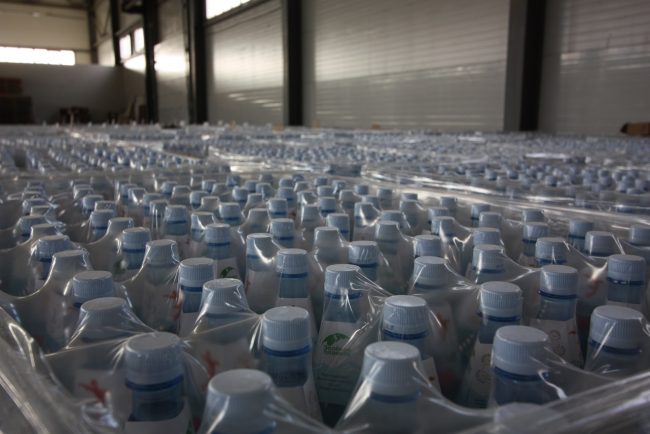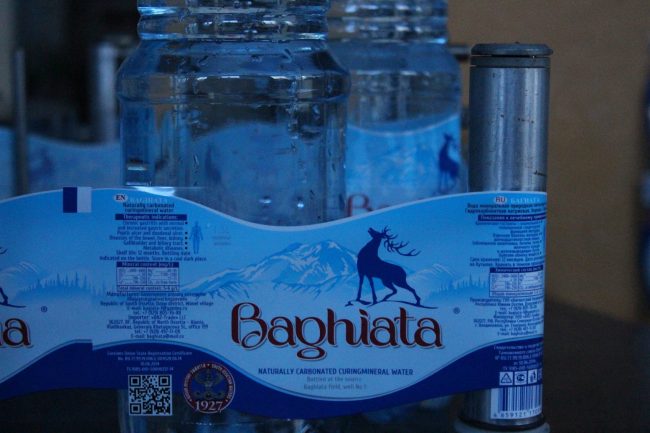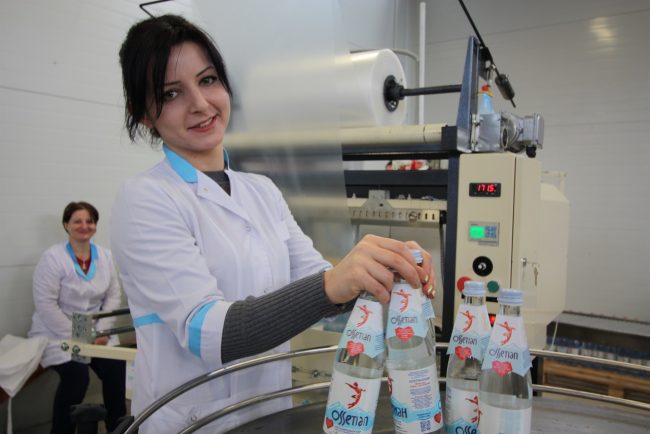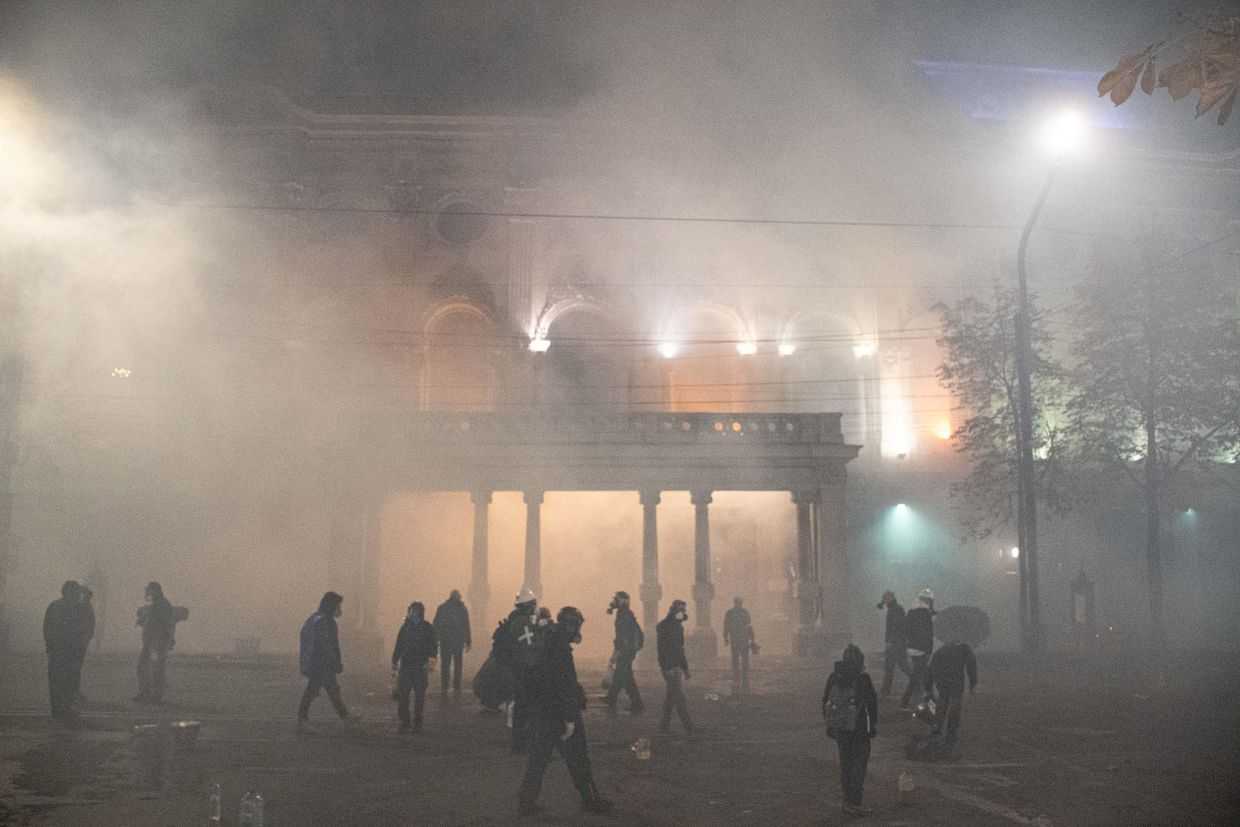

 Mineral waters occupy a symbolic place in South Ossetia, and there are hopes to develop this into a successful industry. But due to its international isolation, exports abroad remain practically impossible, and even their ‘window to the world’, Russia, remains largely closed to them.
Mineral waters occupy a symbolic place in South Ossetia, and there are hopes to develop this into a successful industry. But due to its international isolation, exports abroad remain practically impossible, and even their ‘window to the world’, Russia, remains largely closed to them.
‘Of course, I understand that for our factory to bring in serious money, we need to look towards Russia, and not only there. We’re thinking about it, but haven’t exported any yet’, the director of the Baghiata mineral water bottling plant, Vadim Bestayev, tells OC Media.
Founded in 1957, the state-run bottling plant brings in around ₽4 million ($7,100) to the government’s coffers annually. South Ossetia’s 2018 budget is ₽7.67 billion ($136 million).
The produce is sold on the local market year round. The design capacity of the plant is 2 million bottles per year, between 15,000 and 17,000 per day. Bestayev says that Baghiata water is counterfeited in North Ossetia, and sold as if it was from South Ossetia.

‘Our product is completely unprotected in this sense. Although, this indicates that our water is in demand in our neighbouring republic. Many residents of our republic export it there in large batches. But this is illegal distribution’, he said.
Russia recognised South Ossetia’s independence in 2008. And according to Bestayev, the plant was re-equipped in 2011 after Moscow introduced an investment programme for social support.
Free trade vs protectionism
According to a trade agreement between South Ossetia and Russia dated 2 March 2012, goods from South Ossetia can be freely exported to Russia.
With the mediation of the government of South Ossetia, Baghiata was exported to Moscow and Crimea. But this, Bestayev says, was a very small quantity and was quickly lost in such a large market. In addition, supplies were irregular.
According to South Ossetian economist Vakhtang Dzhigkayev, ‘the internal market is really quite narrow — it’s a big problem. But on the other hand, practically we have not produced anything in volumes that would have had a potential for export to Russia. Let’s remember that Baghiata is now seen only in North Ossetia.’
But according to entrepreneur and public figure, Timur Tskhovrebov, South Ossetia’s internal market should be the focus. ‘The economy of the state will not be supported by exports, we must orient towards ourselves. That is, produce our own products and replace imports’, Tskhovrebov told OC Media.
In terms of exports, he says that even if they existed, they would still face considerable bureaucratic obstacles. ‘Unfortunately, for the most part, there are no bodies in our country today that could regulate and resolve all issues with paperwork and crossing of goods from South Ossetia across the Russian border’, he said.
He added that such questions are usually resolved within Russia itself, through brokerage firms. ‘We have a Chamber of Commerce for that, which, unfortunately, is not yet working’, Tskhovrebov added.
Trade with Georgia
‘The only transport artery connecting us with Russia is the Transcaucasian Highway. Here there are many problems using it during bad weather. Sometimes the road can be closed for several days’, Bestayev said.
The distance between Tskhinval and Vladikavkaz, the capital of North Ossetia, is only 170 kilometres. But the road passes over a mountain pass. The highest point of the route is more than 2,000 metres above sea level. Cargo was transported to Armenia, Azerbaijan, Georgia, Turkey, and Iran via this road. This became completely impossible after the August war in 2008.
Since South Ossetia’s border with Georgia is almost entirely closed, its possible to travel there only through the simplified Razdakhan checkpoint, located at the border town of Leningor. Checks are implemented by Russian border guards, and only local residents with special passes issued by the South Ossetian authorities can cross.
There are also special rules pertaining to trade across this border. According to a South Ossetian government resolution, goods taken to and from Georgia are restricted to 50 kilogrammes per person. Many locals, in order to get around the limit, fill a minibus with passengers and divide the kilogrammes amongst them. In this way, residents of Leningor supply agricultural products not only for themselves, but also to the capital, Tskhinval.
Goods from South Ossetia also reach Georgia. Local journalist Tamara Mearakishvili says that locals transport to Georgia goods that are more expensive there.
A market too small for competition
Two years ago, South Ossetian businessperson Vladimir Bosikov, along with several others, began producing the Alandon mineral water, from a spring in the mountainous village of Zgubir.
They did everything themselves: prepared all the necessary documents, purchased equipment, built high-altitude road infrastructure, and installed water and electricity.
‘We worked with the largest company in North Ossetia, Frostway. But it was clear the market was already occupied by Baghiata, and [the market] was too small. So it was necessary to look towards Russia and beyond’, Bosikov told OC Media.
After disappointing sales, a deal was struck between South Ossetia and Vladimir Oblast, to lease Alandon’s facilities to Ossetia’s Spring, and bring water from South Ossetia to the Russian market. The deal was overseen by Vladimirskiy Standart.
Entering the Russian market
According to Azamat Gassiyev, executive director of Ossetia’s Spring, they now produce two products; Alandon, for the South Ossetian market, and Osetinskaya, for export.
The plant currently employs 18 people, and Osetinskaya is now exported to Vladimir Oblast, Kazan, Rostov-on-Don, Lipetsk, and Samara. They produce more than 17,000 bottles per month, and, the director says this could triple after upgrades to the factory are completed.

He says the process of declaring goods is resolved quickly in South Ossetia but that ‘resolution of issues on the Russian side usually takes longer’.
Gassiyev says the main problem with exporting the water is with the Russian customs. Since practically all the materials for producing bottled water, except for the water itself, must be imported from Russia, they must deal with the border bureaucracy twice — before and after bottling.
Despite South Ossetia’s free trade agreement with Russia theoretically opening the market to all South Ossetian companies since 2012, Osetinskaya is the only brand to have so far managed it.
All place names and terminology used in this article are the words of the author alone, and may not necessarily reflect the views of OC Media’s editorial board.








